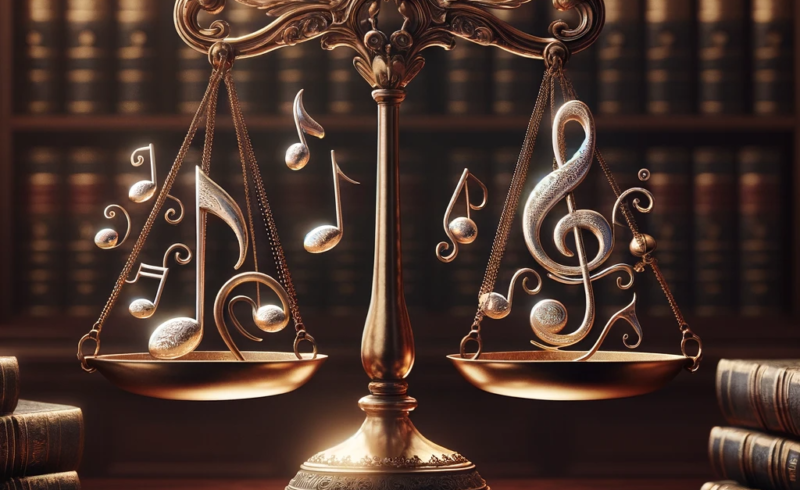
The recently revived Ambrosetti v. Oregon Catholic Press lawsuit was first filed in 2016. Can these things drag on or what?!
Some of you probably weren’t born yet, so how about a quick recap?
A decade ago, plaintiff Vincent Ambrosetti believed his song “Emmanuel” was infringed by Bernadette Farrell’s “Christ Be Our Light,” for which Oregon Catholic Press is the publisher. He therefore sued, but of course the defense argues Farrell never heard “Emmanuel” (you can’t copy what you’ve never heard, right? and besides, the works aren’t substantially similar — more on that in a moment) Years of back and forth ensue, and notably some of the plaintiff’s evidence — letters from OCP’s publisher, which may have supported the question of access — were excluded as evidence. Five years on, the case gets tossed.
(btw I have no idea how to type an em-dash and cannot be bothered at the moment.)
Now, this being Musicologize, we’re gonna jump past the access question per se, and get to the part where “Christ Be Our Light” Is Not “Emmanuel.” Because it’s not. And therefore, ultimately, the question of access is, as usual, mostly irrelevant. But the unholy spirit of the very flawed “inverse ratio rule” — supposedly buried with Skidmore v. Led Zeppelin — is still winged and flying around over at the Ninth Circuit. So another five years later, in 2025, the Ninth revived it! It isn’t so much that the letters were unfairly barred, but just, well, Ambrosetti deserved to go a few more rounds.
And here’s the problem: with the resurrection of Ambrosetti v. OCP, we’re not confronting a hard musicology issue. It’s being made to be hard with questionable forensic musicology analysis propping up an argument that should ultimately be doomed, and a pedantic process reanimating a non-case. The plaintiff’s expert witness relied on musicological contrivances, misalignments, and overstatement of inconsequential overlap — common failures, granted. (btw I have no idea how to type an em-dash and cannot be bothered at the moment.) The defense’s expert countered (somewhat ironically but mostly correctly) that the musical gestures involved are ordinary liturgical devices. I agree — they’re commonplaces more broadly than that. In fact, I might argue that even if Bernadette Farrell had Emmanuel open while she wrote Christ Be Our Light, she’d still have failed to copy it in any meaningful, protectable sense.
Yet the Ninth Circuit’s familiar liturgy persists: fixate on the vagaries of access, let a jury sort out “triable” similarity. That’s doctrinal theater. The similarities are trivial; access is irrelevant. The rest of this is the system indulging in ritual over reality.
In 2020, the Ninth Circuit buried the so-called “inverse ratio rule” in Skidmore v. Led Zeppelin. They called it illogical, unhelpful, and confusing — and at the time I applauded. In my own writing, I’d said the rule was simply nonsensical: you can’t flip access and similarity. As I put it then, you could give me a perfect score for knowing Happy Birthday, but that tells you nothing about whether the song I’m writing will be similar to it.
But then, I reconsidered. Shyam Balganesh, a Columbia professor, persuaded me that the rule wasn’t inherently incoherent, just poorly applied. As circumstantial evidence, similarity and access can be probative when taken together. The mistake was treating it as a formula or as a rule. So I softened. My critique became less “nonsense” than “misapplied.”
Which brings us to Ambrosetti v. OCP. This is why the inverse ratio was abandoned. The similarities here are trivial. Musicologically, they don’t add up to infringement. And we allow, and here the Ninth Circuit rather insists on letting access breathe life back into the claim. That’s how you get a resurrection of the inverse ratio rule in all but name. Weak, barely plausible similarity mixes with the overemphasis on access, and a decade-old case finds its way back — a reversal, and again a triable issue according to the Ninth Circuit’s opinion reviving Ambrosetti v. Oregon Catholic Press
The problem isn’t the music — the music is clear. The process overindulges first beating to death, “Did the defendant possibly hear the song?” which is very much a forest-for-the-trees pitfall, and it clouds the only real issue: substantial similarity.
The problem isn’t the music — the music is clear. The problem is a process that indulges the old ritual of first beating to death, “Did the defendant possibly hear the song?” which is very much a forest for the trees type of pitfall, that clouds the issue of substantial similarity.
And here’s why this sticks in my craw! I’m not wise enough to dictate the law, but I do know this: litigation is expensive. Extra rounds, if they’re nonsense, are just throwing time, energy, and money away. And too often I find them to be nonsense that dis
Meanwhile, of course, two forensic musicologists can disagree. Ambiguities do exist, and sometimes these things are genuinely close calls. Who’s to say?
Well — me. At the end of the day, this is the point of Musicologize: to say when similarities are real and when they’re not. And here, they’re not. Christ Be Our Light is not Emmanuel. That’s clear, and it matters.
Because when a non-case like this gets extra innings, it doesn’t just waste resources, it distorts the risk profile for everyone — not just plaintiff and defendant, but also publishers, writers, insurers, even, I suppose, future juries. It makes it look as if trivial similarities and speculative access theories deserve to be feared, insured against, and litigated. Trivial similarities don’t create liability; they just distort the music copyright risk profile.
So let’s call this case what it is: not a music copyright infringement, but a resurrection of process over substance. The similarities are trivial. Access is irrelevant. And the rest is just holy smoke and mirrors.